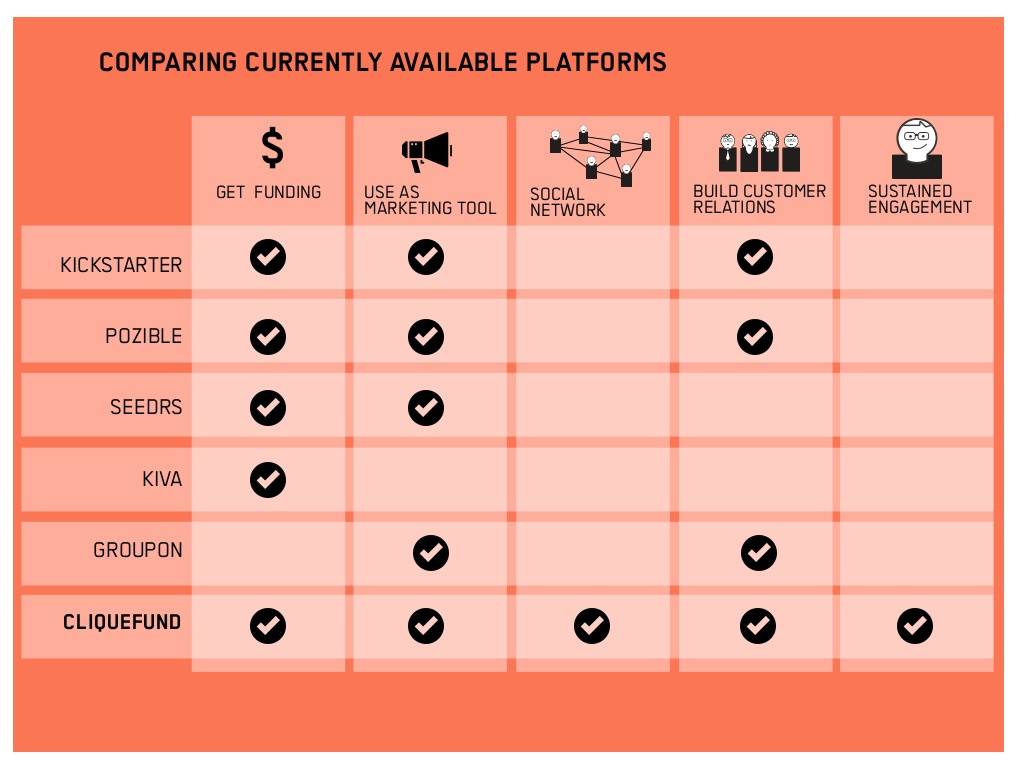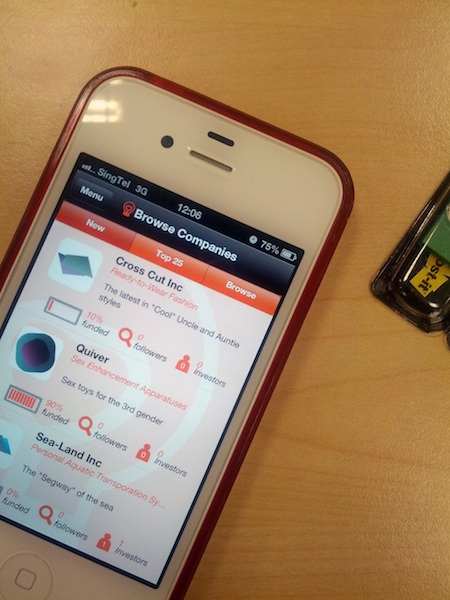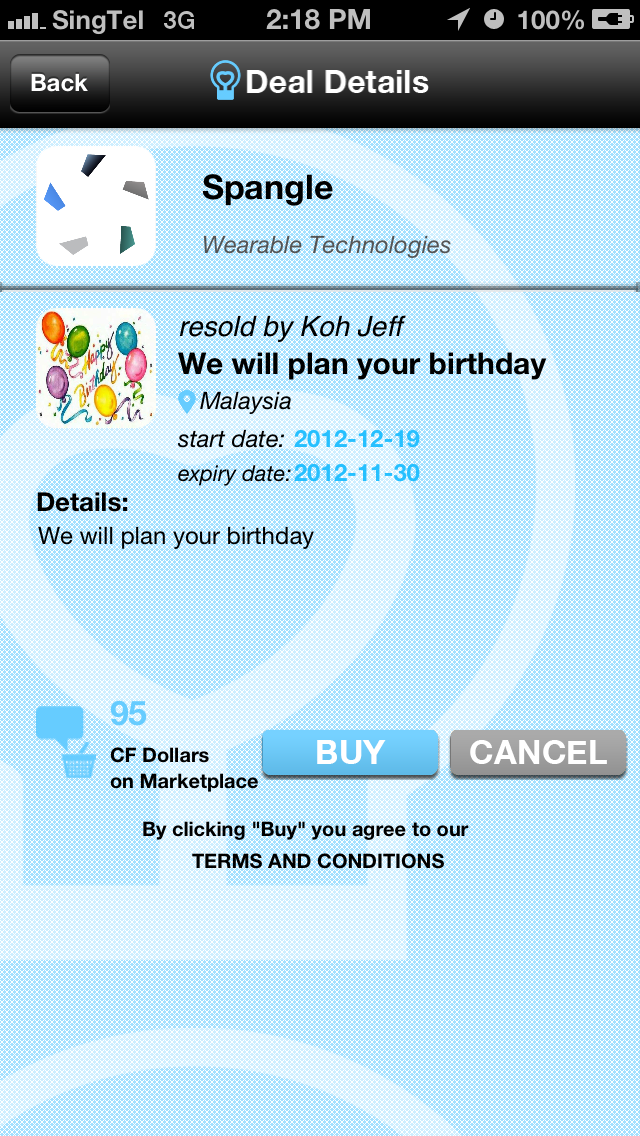Helping startups find the right clique
By Gabey Goh December 14, 2012
- CliqueFund to help start-ups extend community engagement with a different kind of crowd-funding
- Fully focused on a mobile delivery strategy with private beta launch slated for early 2013
 PERSONAL frustrations and pain are a common source of inspiration for start-up ideas.This is true in the case of CliqueFund, a Singapore-based community patronage platform for start-ups.
PERSONAL frustrations and pain are a common source of inspiration for start-up ideas.This is true in the case of CliqueFund, a Singapore-based community patronage platform for start-ups.
In an email interview with Digital News Asia (DNA), CliqueFund co-founder Jef Koh (pic) shared that he and co-founder James Teh used to work in a laboratory creating new and various forms of interactive digital media.
“Even though we created these inventions with novel innovation and ‘building a better world’ in mind, we were faced with many obstacles in bringing our inventions to market,” he said.
The duo realized that many innovations that could make a real impact on culture and society would never reach everyday people due to factors such as profit, intellectual property and community outreach.
They knew that Kickstarter was initiating a revolution in what can be now described as the ‘shared economy’, but realized that the platform was geared more toward one-time creative projects.
“We asked ourselves if something like this could be created for start-ups and quickly identified that they would need a better means of sustained engagement and advocacy. Instead of create a ‘cookie cutter’ platform of Kickstarter, we wanted to build this mechanism for engagement from the ground up, and CliqueFund was born,” he said.
 A different kind of clique
A different kind of clique
CliqueFund positions itself as occupying a slightly different space from popular crowd-funding platforms such as Kickstarter or Groupon (click on image to enlarge).
As Koh explains, be it for-profit or not-for-profit, start-ups face numerous challenges when building awareness for their causes, products and services.
These include acquiring funding, but more importantly building market awareness, community and customer engagement, and advocacy.
“Amazing services such as Kickstarter enable projects to be funded, but engagement with the community that supports the projects is limited. In a sense it is a ‘one -time’ engagement,” said Koh.
CliqueFund hopes to extend this engagement throughout the development of a start-up by turning supporters into patrons who feel that they have a vested interest in the well-being of the start-up because they believe in what they offer, not only because of their profitability.
Thus the team’s mission to provide a means for start-ups to build communities around their offers, to develop long-term engagement strategies, attract advocates and patrons, and also gain funding.
CliqueFund, similar to Groupon, offers coupons issued to patrons in return for funding which can be exchanged for whatever the start-up can provide. However, patrons can also choose to sell and trade these coupons with other patrons, sharing some similarities with eBay.
“This provides a ‘halo’ effect for the start-up that originally issued the coupon. Through this fun and competitive interaction between patrons, they become advocates for the start-up. This innovative mechanism for sustainable engagement between patrons and startups is not provided by any other crowd-funding platform and it is what makes CliqueFund unique,” said Koh.
Setting up the clique
 CliqueFund was first launched as a website and from a technological standpoint; Koh said the team relies on proven and established technologies to develop its platform.
CliqueFund was first launched as a website and from a technological standpoint; Koh said the team relies on proven and established technologies to develop its platform.
Its founders believe that the real innovation lies not in the technology but in the interaction.
But shortly after developing it, the team decided early on to move towards a mobile app instead, with a private beta launch slated for early 2013.
“We decided that we wanted a platform that was mobile and could be used at any time. Therefore we looked toward building our product entirely as a mobile app as opposed to a web-based service,” he said.
“Our current version is a proof-of-concept. With this we first want to create awareness within the start-up community, and learn what start-ups really want and need to get up and running,” he added.
Koh claimed that the feedback received so far from the start-up communities in Singapore and Malaysia has been extremely positive.
“From incubators to start-ups to everyday users, people really see the value in what we are offering, and are quickly realizing that success cannot only be measured with a sizable bottom-line and that sustainability is needed in order to maximize impact,” he said.
Koh believes that the potential for CliqueFund to fundamentally change the way how people engage with start-ups is something that the very particular Asian start-up ecosystem is in dire need of.
“We have the people, the infrastructure and policy, but what our ecosystem is lacking is the culture. I believe that the potential paradigm shift that CliqueFund offers could elevate our region towards building a kind of ‘Silicon Valley 2.0’. This type of impactful innovation would motivate anyone who wants to make a social and cultural difference in their community,” he said.

Koh and Teh are not alone in their venture; CliqueFund is currently entirely owned by a large team of founders and partners hailing from Malaysia, Pakistan, Austria, Spain, China and Canada.
The team boasts expertise in entrepreneurship, banking, engineering, computer science, software development, law and various design disciplines. Combined, members have individually worked for organizations such as Barkleys, NUS, Blackrock and IDEO.
“The team is composed of some truly amazing people from all sorts of diverse backgrounds and expertise. I myself have a background in fine arts and experience design, and I currently work as a researcher at the Keio-NUS CUTE Center where I am pursuing my PhD in integrative sciences and engineering,” said Koh.
One challenge faced by all members is the juggling of 'day job' commitments with the work required to get CliqueFund running.
In Koh’s case, he is in the process of completing his doctorate: “I am in a sort of ‘chicken-and-egg’ situation, as I know that finishing my PhD will lend me credibility when I assume the role of CEO for Cliquefund next year, but at the same time I want to pour every moment I have into it because it is something I feel so passionate about.”
But what keeps him going is the camaraderie he enjoys with his co-founders and partners.
“We have a great time together working and playing. They constantly challenge every aspect of what we offer, and also amaze me on a regular basis with the solutions to many of the issues that come up as we develop. When I live and work with such motivated people, I can’t help but be inspired to support them.”
The main mission for the CliqueFund team for the next 12 months is to spread awareness about its platform.
“We will do this by conducting closed testing with select start-ups, as well as talk to as many people in the start-up community as we can,” said Koh.
Armed with the feedback received from its initial batch of users, the team will then get to work on developing the latest version of its product, which will look at user experience and interaction. After which, launching its first open beta test will be the next step.
Of course, the best way to prove that your product is viable is to use it yourself and Koh said the team will indeed be attempting to “fund ourselves entirely with our own platform.”
“Still, we imagine that we would eventually need to apply for some type of angel or seed funding in order to scale,” he said.
To keep up to date with CliqueFund’s progress, you can check out their blog, or follow them on Facebook or Twitter.


